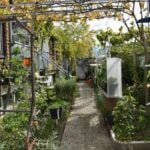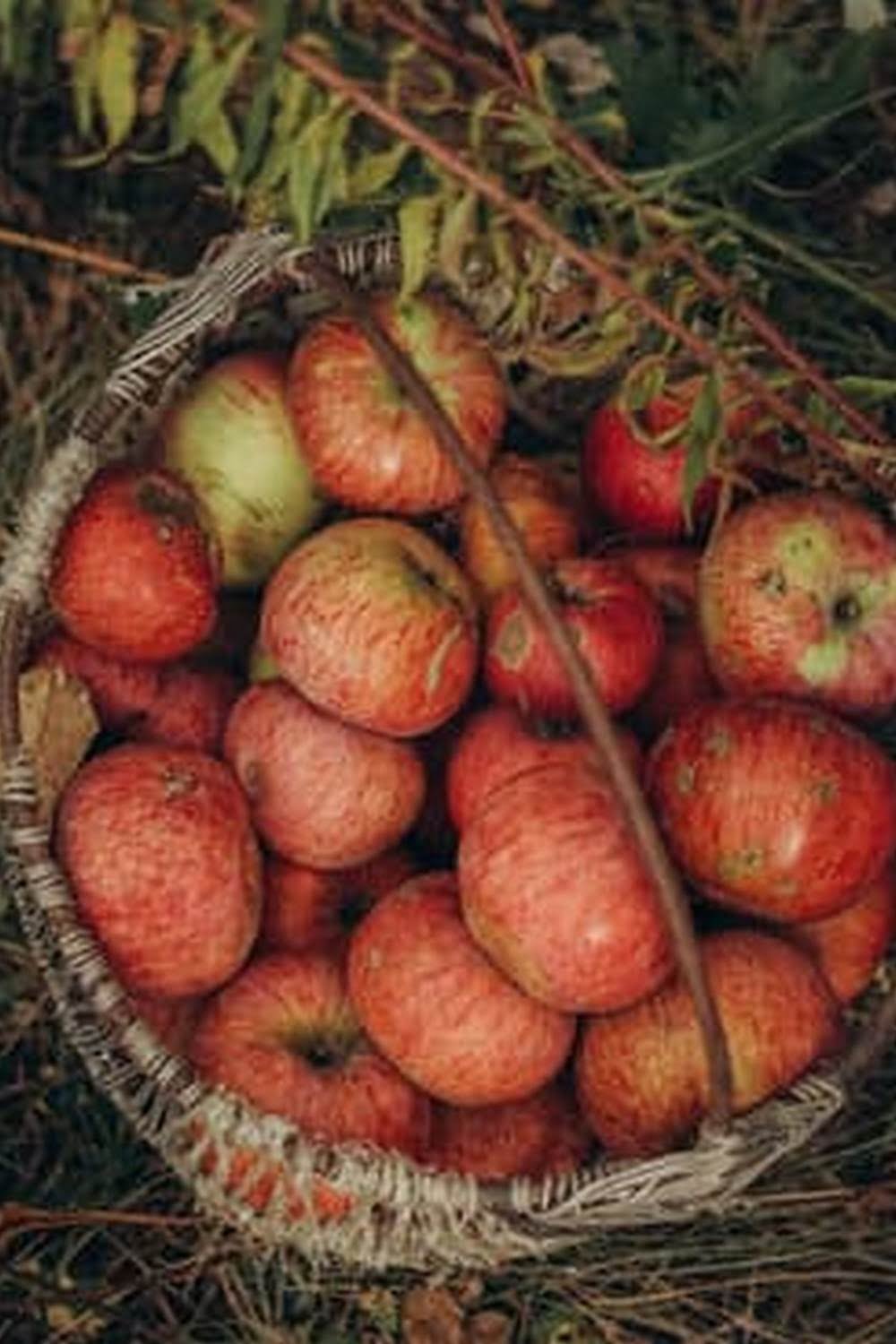Are you interested in starting a vegetable garden on a budget? Vegetable gardening can be a rewarding and cost-effective way to provide fresh produce for you and your family. In this article, we will explore the benefits of vegetable gardening on a budget, as well as provide practical tips and ideas for getting started.
Vegetable gardening on a budget allows you to save money on grocery bills while also enjoying the satisfaction of growing your own food. Whether you have limited space or resources, there are various strategies to help you maximize your efforts and minimize costs. From choosing cost-effective vegetables to implementing sustainable practices, there are plenty of ways to make vegetable gardening affordable and enjoyable.
In the following sections, we will delve into planning your vegetable garden, choosing the right vegetables to grow, creating a budget-friendly garden setup, saving money on seeds and plants, implementing sustainable practices, and more. By the end of this article, you’ll be equipped with the knowledge and inspiration to start your own vegetable garden without breaking the bank. Let’s get started.
Planning Your Vegetable Garden
When it comes to vegetable gardening on a budget, planning is crucial in order to maximize space and resources. By carefully considering the layout of your garden and the needs of different vegetable plants, you can ensure that you make the most of what you have. Here are some key factors to consider when planning your vegetable garden on a budget.
Utilizing Vertical Space
One cost-effective way to maximize space in your vegetable garden is by utilizing vertical space. Consider growing climbing vegetables such as peas, beans, cucumbers, and tomatoes on trellises or stakes. This not only saves ground space but also allows for better air circulation and easier harvesting.
Companion Planting
Another strategy for maximizing space and resources in your vegetable garden is through companion planting. By strategically planting different vegetables together based on their compatibility, you can naturally deter pests, improve soil fertility, and increase overall yield without having to spend more on chemical fertilizers or pesticides.
Succession Planting
Succession planting is a technique where new crops are planted as soon as old ones are harvested. This allows you to make the most of your growing season and space by continuously sowing and reaping crops throughout the year. By carefully planning your planting schedule, you can ensure a steady supply of fresh produce without needing to invest in additional garden beds or land.
By implementing these strategies for maximizing space and resources in your vegetable garden, you can effectively grow a bountiful harvest while sticking to a budget. With careful planning and resourcefulness, you can create a productive and sustainable garden without breaking the bank.
Choosing Cost-Effective Vegetables to Grow
When it comes to vegetable gardening on a budget, selecting cost-effective vegetables to grow can make a significant difference in your overall expenses. By choosing the right vegetables, you can maximize your harvest while minimizing the investment required. Here are some budget-friendly vegetables that are not only economical to grow but also provide a high yield:
- Tomatoes: With proper care, tomatoes can produce bountiful fruit throughout the growing season, making them an excellent choice for budget-conscious gardeners.
- Zucchini: Zucchini plants are known for their prolific production, providing an abundance of squash that can be enjoyed fresh or preserved for later use.
- Green Beans: This easy-to-grow vegetable is not only budget-friendly but also offers a high yield, making it a great addition to any cost-effective garden.
In addition to these options, root vegetables such as carrots and radishes, as well as leafy greens like lettuce and spinach, are also economical choices for those looking to save money while growing their own produce. By focusing on these cost-effective vegetables, you can enjoy a plentiful harvest without breaking the bank.
Maximizing Your Budget-Friendly Vegetable Garden
Once you’ve selected the cost-effective vegetables you want to grow, it’s essential to consider how to maximize your garden space and resources for optimal efficiency. Here are some tips for getting the most out of your budget-friendly vegetable garden:
- Utilize vertical gardening techniques to make the most of limited space and increase your overall yield.
- Interplanting compatible crops can help maximize space and reduce the need for additional resources such as water and fertilizer.
- Consider companion planting strategies to naturally control pests and encourage healthy growth without relying on expensive chemical solutions.
By implementing these strategies, you can make the most of your chosen cost-effective vegetables while maintaining a frugal approach to vegetable gardening.
DIY Garden Bed and Container Ideas for a Budget-Friendly Setup
When it comes to vegetable gardening on a budget, one of the most important considerations is finding cost-effective ways to set up your garden beds and containers. By utilizing DIY ideas, you can create a budget-friendly setup that maximizes your space and resources. Here are some creative ideas for creating garden beds and containers without breaking the bank:
1. Raised Bed Gardens: Instead of purchasing expensive raised bed kits, consider building your own using affordable materials such as untreated lumber, cinder blocks, or even old pallets. This allows you to customize the size and shape of your raised beds while keeping costs low.
2. Container Gardening: For those with limited outdoor space or poor soil quality, container gardening is an excellent budget-friendly option. Look for inexpensive containers such as plastic storage bins, five-gallon buckets, or even re-purposed items like old tires or wooden crates.
3. Vertical Gardening: Another space-saving and cost-effective option is vertical gardening. Utilize items like wooden pallets, PVC pipes, or hanging shoe organizers to create vertical planters for growing herbs and compact vegetables.
In addition to these DIY ideas, consider reaching out to local gardening groups or online forums where fellow gardeners may be giving away or selling affordable secondhand garden beds and containers. By thinking creatively and utilizing these budget-friendly ideas, you can set up your vegetable garden without breaking the bank.
Saving Money on Seeds, Plants, and Garden Tools
When it comes to vegetable gardening on a budget, finding cost-effective seeds, plants, and garden tools is essential for keeping expenses low. Here are some tips and tricks for saving money on these crucial elements of your vegetable garden.
Seed Swapping and Sharing
One of the easiest ways to save money on seeds is to participate in seed swapping or sharing programs. These can be found in local gardening communities, online forums, or even through social media groups. By exchanging seeds with others, you can gain access to a wider variety of plants without having to spend a dime.
Starting From Seeds
While purchasing seedlings from a nursery may seem convenient, starting your vegetables from seeds can be much more budget-friendly. Seeds are typically less expensive than established plants, and they also allow you to have more control over the growing process from the very beginning.
Garden Tools: Secondhand and DIY
Instead of splurging on brand new garden tools, consider shopping for secondhand items at thrift stores or garage sales. Many times, you can find gently used tools at a fraction of the cost. Additionally, consider making your own garden tools using materials you already have at home. For example, repurposing old wooden handles into plant markers or utilizing sturdy household items as makeshift gardening implements can be both economical and environmentally friendly.
By being resourceful and creative when it comes to acquiring seeds, plants, and garden tools, you can significantly reduce the financial investment required for vegetable gardening while still enjoying a bountiful harvest.
Implementing Sustainable Practices to Reduce Costs
When it comes to vegetable gardening on a budget, implementing sustainable practices can significantly reduce costs in the long run. One of the most effective ways to do this is by practicing water conservation. Using mulch in your garden helps retain soil moisture, reducing the need for frequent watering. Additionally, collecting and using rainwater to irrigate your garden can result in substantial savings on your water bill.
Another sustainable practice that can help reduce costs is composting. Instead of buying expensive fertilizers, you can create nutrient-rich compost from kitchen scraps and yard waste. Not only does this reduce the amount of organic waste going into landfills, but it also provides free fertilizer for your vegetable garden.
In addition to water conservation and composting, incorporating companion planting and natural pest control methods can also help reduce costs in vegetable gardening. Companion planting involves growing certain plants together to enhance growth or repel pests, reducing the need for chemical pesticides. For example, planting marigolds alongside tomatoes can deter nematodes and other harmful insects. These sustainable practices not only save money but also promote a healthier and more environmentally friendly gardening approach.
| Sustainable Practice | Cost-Reduction Benefit |
|---|---|
| Water Conservation | Reduces need for frequent watering; saves on water bill |
| Composting | Provides free fertilizer; reduces organic waste going into landfills |
Harvesting and Preserving Your Vegetable Bounty
Once your vegetables are ready to harvest, it is important to do it at the right time. This will ensure that you enjoy maximum flavor and nutrition from your homegrown produce. It’s also a good idea to research the best way to harvest each type of vegetable, as some should be picked when they are small and tender, while others are best left on the vine or plant for longer.
After harvesting, proper storage is crucial for preserving the quality of your vegetables. Some vegetables can be kept fresh in the refrigerator, while others are better suited for preservation through canning, freezing, or drying.
One cost-effective way to preserve your vegetable bounty is by learning the art of food preservation. Canning and pickling are great methods for extending the shelf life of your produce without needing to spend a lot of money.
Home canning equipment can be purchased at an affordable price, and once you have the basic tools, you can continue using them for years to come. Additionally, freezing your surplus vegetables is another great way to make them last longer without having to invest in expensive equipment.
A helpful tip for those with limited space and resources is to consider joining a community garden where participants share tools and seeds. Community gardens are a great way for individuals who want to participate in vegetable gardening on a budget to do so without having their own property or resources. This allows people not only access affordable gardening but also learn from other experienced gardeners who understand how to successfully grow fruits and vegetables in their local climate.
| Vegetable Harvesting | Food Preservation |
|---|---|
| Harvest at the right time | Canning |
| Proper storage techniques | Pickling |
| Joining a community garden | Freezing produce |
Budget-Friendly Tips for Organic Pest and Disease Control
One of the challenges of vegetable gardening on a budget is finding cost-effective ways to control pests and diseases in an organic manner. Luckily, there are several methods that can help you keep your garden healthy without breaking the bank.
One budget-friendly option for pest control is to implement companion planting. By strategically placing certain plants together, you can naturally repel pests and attract beneficial insects. For example, planting marigolds alongside your vegetables can deter nematodes, while attracting pollinators to your garden. This not only helps with pest control but also promotes biodiversity in your garden.
Another effective way to deal with pests and diseases in a budget-friendly manner is by making homemade organic sprays. For instance, a mixture of water, garlic, and dish soap can be used as a natural insecticide to keep pests at bay. Additionally, applying neem oil or vinegar solutions can help prevent and manage common fungal diseases on your plants.
In addition, practicing good garden hygiene by regularly removing diseased plants and debris can help prevent the spread of diseases, reducing the need for costly treatments. By incorporating these budget-friendly pest and disease control methods into your vegetable gardening routine, you can maintain a healthy garden without overspending.
Final Thoughts
In conclusion, vegetable gardening on a budget can be a rewarding and fulfilling experience for anyone looking to grow their own food while also saving money. By carefully planning your garden, choosing cost-effective vegetables, and implementing budget-friendly DIY ideas for garden beds and containers, you can maximize space and resources to create a thriving vegetable garden without breaking the bank.
Furthermore, by utilizing sustainable practices such as composting, water conservation, and natural pest control methods, you can reduce costs while also minimizing your environmental impact. Harvesting and preserving your vegetable bounty not only allows you to enjoy the fruits of your labor throughout the year but also helps save money on groceries.
Overall, vegetable gardening on a budget offers more than just financial benefits. It provides a sense of pride and satisfaction in knowing that you are able to produce your own healthy and organic food at a fraction of the cost.
The joy of watching seeds grow into delicious vegetables, taking care of the plants, and reaping the rewards of your efforts is truly priceless. So whether you have limited funds or simply want to live a more sustainable lifestyle, vegetable gardening on a budget is an accessible and fulfilling endeavor for anyone willing to get their hands dirty in the soil.
Frequently Asked Questions
How Do You Make a Veggie Garden on a Budget?
Creating a budget-friendly veggie garden involves careful planning and resourcefulness. One way to save money is by starting from seeds instead of buying seedlings. You can also build raised beds using inexpensive materials like recycled wood or cinder blocks.
What Is the Most Economical Vegetable to Grow?
The most economical vegetable to grow depends on various factors such as climate, soil conditions, and personal preferences. However, some of the most cost-effective vegetables to grow include leafy greens like lettuce and spinach, as they are high-yielding and versatile in many dishes.
Is It Really Cheaper to Grow Your Own Vegetables?
Growing your own vegetables can be cheaper in the long run, especially if you make the initial investment in gardening tools and resources. It also allows you to control the quality of your produce, reduces trips to the grocery store, and can lead to savings on your grocery bill over time.
However, it’s important to consider the upfront costs and time commitment involved in successful gardening.

If you’re looking to get into vegetable gardening, or are just looking for some tips on how to make your current garden better, then you’ve come to the right place! My name is Ethel and I have been gardening for years. In this blog, I’m going to share with you some of my best tips on how to create a successful vegetable garden.





